The Copenhagen interpretation is a collection of views about the meaning of quantum mechanics, stemming from the work of Niels Bohr, Werner Heisenberg, Max Born, and others. While "Copenhagen" refers to the Danish city, the use as an "interpretation" was apparently coined by Heisenberg during the 1950s to refer to ideas developed in the 1925–1927 period, glossing over his disagreements with Bohr. Consequently, there is no definitive historical statement of what the interpretation entails.
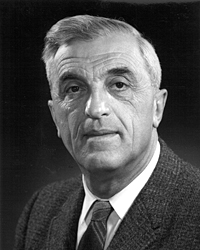
Felix Bloch was a Swiss-American physicist and Nobel physics laureate who worked mainly in the U.S. He and Edward Mills Purcell were awarded the 1952 Nobel Prize for Physics for "their development of new ways and methods for nuclear magnetic precision measurements." In 1954–1955, he served for one year as the first director-general of CERN. Felix Bloch made fundamental theoretical contributions to the understanding of ferromagnetism and electron behavior in crystal lattices. He is also considered one of the developers of nuclear magnetic resonance.
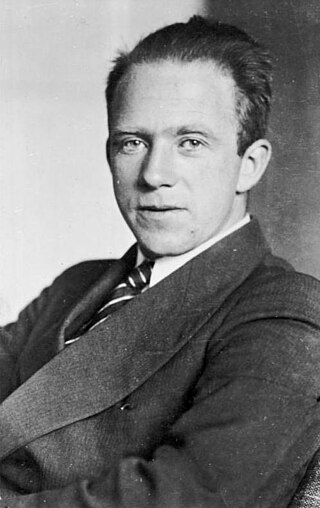
Werner Karl Heisenberg was a German theoretical physicist, one of the main pioneers of the theory of quantum mechanics, and a principal scientist in the Nazi nuclear weapons program during World War II. He published his Umdeutung paper in 1925, a major reinterpretation of old quantum theory. In the subsequent series of papers with Max Born and Pascual Jordan, during the same year, his matrix formulation of quantum mechanics was substantially elaborated. He is known for the uncertainty principle, which he published in 1927. Heisenberg was awarded the 1932 Nobel Prize in Physics "for the creation of quantum mechanics".
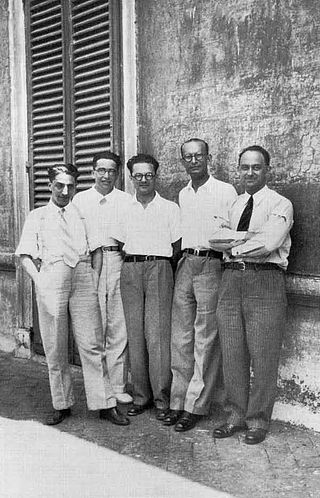
Franco Dino Rasetti was an Italian physicist, paleontologist and botanist. Together with Enrico Fermi, he discovered key processes leading to nuclear fission. Rasetti refused to work on the Manhattan Project on moral grounds.

Isidor Isaac Rabi was an American physicist who won the Nobel Prize in Physics in 1944 for his discovery of nuclear magnetic resonance, which is used in magnetic resonance imaging (MRI). He was also one of the first scientists in the United States to work on the cavity magnetron, which is used in microwave radar and microwave ovens.

Edward Mills Purcell was an American physicist who shared the 1952 Nobel Prize for Physics for his independent discovery of nuclear magnetic resonance in liquids and in solids. Nuclear magnetic resonance (NMR) has become widely used to study the molecular structure of pure materials and the composition of mixtures. Friends and colleagues knew him as Ed Purcell.

Johannes Hans Daniel Jensen was a German nuclear physicist. During World War II, he worked on the German nuclear energy project, known as the Uranium Club, where he contributed to the separation of uranium isotopes. After the war, Jensen was a professor at the University of Heidelberg. He was a visiting professor at the University of Wisconsin–Madison, the Institute for Advanced Study, University of California, Berkeley, Indiana University, and the California Institute of Technology.

Carl Friedrich Freiherr von Weizsäcker was a German physicist and philosopher. He was the longest-living member of the team which performed nuclear research in Nazi Germany during the Second World War, under Werner Heisenberg's leadership. There is ongoing debate as to whether or not he and the other members of the team actively and willingly pursued the development of a nuclear bomb for Germany during this time.
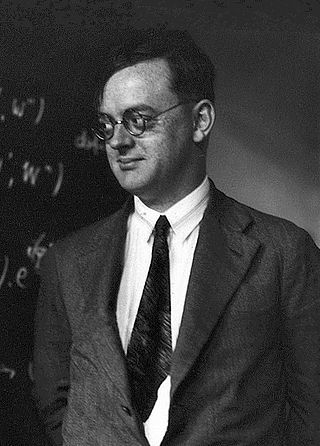
Ernst Pascual Jordan was a German theoretical and mathematical physicist who made significant contributions to quantum mechanics and quantum field theory. He contributed much to the mathematical form of matrix mechanics, and developed canonical anticommutation relations for fermions. He introduced Jordan algebras in an effort to formalize quantum field theory; the algebras have since found numerous applications within mathematics.
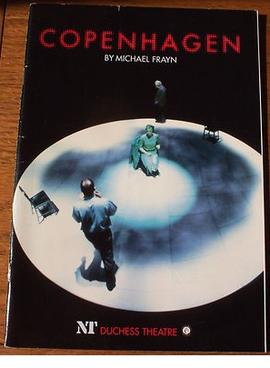
Copenhagen is a play by Michael Frayn, based on an event that occurred in Copenhagen in 1941, a meeting between the physicists Niels Bohr and Werner Heisenberg, who had been Bohr's student. It premiered in London in 1998, at the National Theatre, running for more than 300 performances, starring David Burke, Sara Kestelman, and Matthew Marsh.

Nazi Germany undertook several research programs relating to nuclear technology, including nuclear weapons and nuclear reactors, before and during World War II. These were variously called Uranverein or Uranprojekt. The first effort started in April 1939, just months after the discovery of nuclear fission in Berlin in December 1938, but ended only a few months later, shortly ahead of the September 1939 German invasion of Poland, for which many notable German physicists were drafted into the Wehrmacht. A second effort under the administrative purview of the Wehrmacht's Heereswaffenamt began on September 1, 1939, the day of the invasion of Poland. The program eventually expanded into three main efforts: Uranmaschine development, uranium and heavy water production, and uranium isotope separation. Eventually, the German military determined that nuclear fission would not contribute significantly to the war, and in January 1942 the Heereswaffenamt turned the program over to the Reich Research Council while continuing to fund the activity.

Mário Schenberg was a Brazilian electrical engineer, physicist, art critic and writer.

Ugo Fano was an Italian American physicist, notable for contributions to theoretical physics.
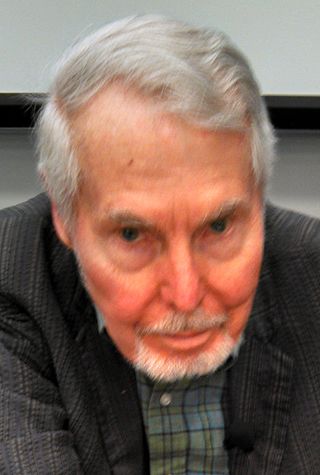
John David Jackson was a Canadian–American theoretical physicist. He was a professor at the University of California, Berkeley and a faculty senior scientist emeritus at Lawrence Berkeley National Laboratory.
Kurt Gottfried was an Austrian-born American physicist who was professor emeritus of physics at Cornell University. He was known for his work in the areas of quantum mechanics and particle physics and was also a co-founder with Henry Way Kendall of the Union of Concerned Scientists. He wrote extensively in the areas of physics and arms control.

The Physical Principles of the Quantum Theory(German: Physikalischen Prinzipien der Quantentheorie publisher: S. Hirzel Verlag, 1930) by Nobel laureate (1932) Werner Heisenberg and subsequently translated by Carl Eckart and Frank C. Hoyt. The book was first published in 1930 by University of Chicago Press. Then in 1949, according to its copyright page, Dover Publications reprinted the "unabridged and unaltered" 1930's version.
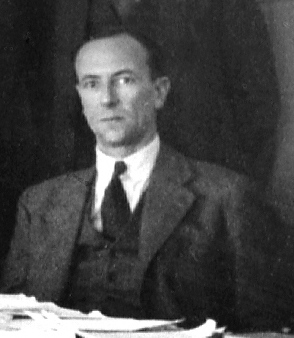
The discovery of the neutron and its properties was central to the extraordinary developments in atomic physics in the first half of the 20th century. Early in the century, Ernest Rutherford developed a crude model of the atom, based on the gold foil experiment of Hans Geiger and Ernest Marsden. In this model, atoms had their mass and positive electric charge concentrated in a very small nucleus. By 1920, isotopes of chemical elements had been discovered, the atomic masses had been determined to be (approximately) integer multiples of the mass of the hydrogen atom, and the atomic number had been identified as the charge on the nucleus. Throughout the 1920s, the nucleus was viewed as composed of combinations of protons and electrons, the two elementary particles known at the time, but that model presented several experimental and theoretical contradictions.
Stanley Sweet Hanna was an American physicist.
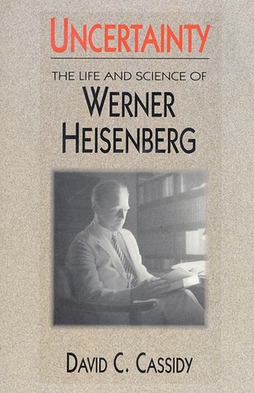
Uncertainty: the Life and Science of Werner Heisenberg is a biography by David C. Cassidy documenting the life and science of Werner Heisenberg, one of the founders of quantum mechanics. The book was published in 1992 by W. H. Freeman and Company while an updated and popularized version was published in 2009 under the title Beyond Uncertainty: Heisenberg, Quantum Physics, and The Bomb. The book is named after the quantum mechanics concept known as Heisenberg's uncertainty principle. It has been reviewed many times and was generally well received.

Beyond Uncertainty: Heisenberg, Quantum Physics, and the Bomb is a biography of Werner Heisenberg by David C. Cassidy. Published by Bellevue Literary Press in 2009, the book is a sequel to Cassidy's 1992 biography, Uncertainty: the Life and Science of Werner Heisenberg and serves as an updated and popularized version of the work. The release of new material after the 1992 publication of the first book rekindled controversy surrounding Heisenberg and his role in the German nuclear weapons program, resulting in the need for an updated version of the biography. The book's name is adapted from the first biography, whose title is taken from Heisenberg's uncertainty principle.

















